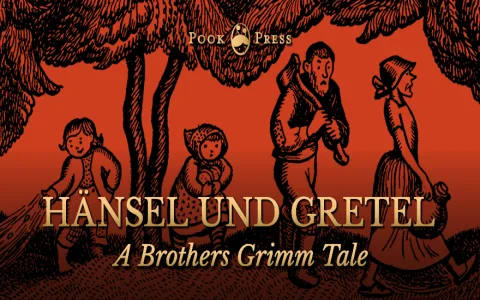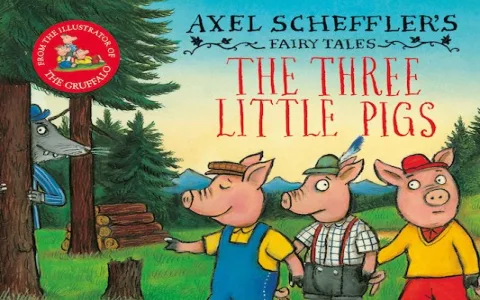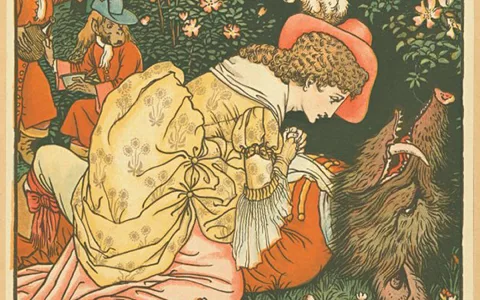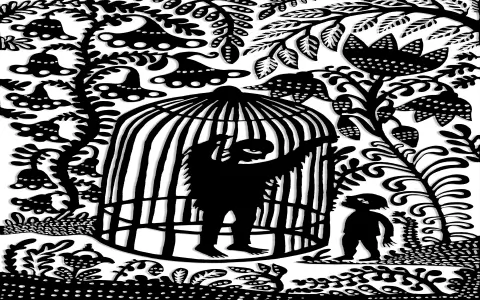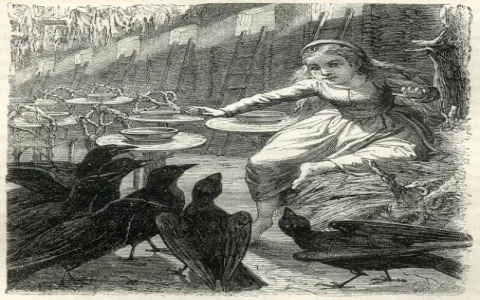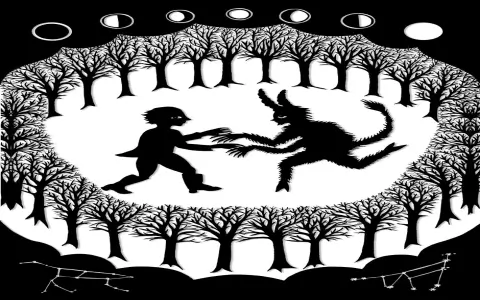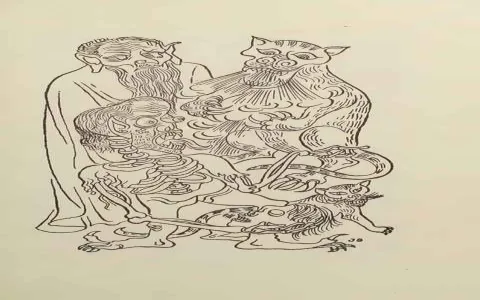This story is about a quarrelsome tailor and his wife.
The tailor had a terrible temper and always found fault with his wife.
No matter what she did—cooking, washing clothes, sweeping the floor—he was never satisfied and grumbled all day long.
Sometimes he even hit her and cursed at her.
His wife was actually a very good woman. She was hardworking, getting up early every day to do her chores;she was kind and never argued with anyone; she also believed in God and often prayed quietly.
But none of this mattered; her husband still didn’t like her.
How did the truth come out?
The villagers had known about this for a long time, but no one had ever done anything about it.
Later, someone reported it to the local authorities.
The authorities sent someone to question the tailor and found that he really did beat his wife regularly.
So they put the tailor in jail, where he was given only bread and cold water to eat and drink, and he suffered for a while.
After a while, the authorities released him, but made him swear in public:
“From now on, I will never beat my wife again. I will live with her in harmony, sharing both the good times and the bad.”
The tailor nodded and said, “I swear, I will change.”
Did he really change at first?
For the first few days after he was released, he was indeed well-behaved. He didn’t swear or hit anyone, and the house was quiet.
Everyone thought he had changed for the better.
But before long, his old habits resurfaced.
He started complaining again, saying that his wife hadn’t done this or that right.
But he remembered his oath and didn’t dare to hit her, so he changed his approach.
He rushed over, grabbed his wife by the hair, and tried to pull her over to yell at her.
His wife screamed in pain, broke free, and ran into the yard.
The tailor wouldn’t give up. He grabbed the measuring tape and scissors he was using to make clothes and chased after her.
He threw things at her as he chased her, throwing the scissors and hitting her with the measuring tape. He even picked up small stones and threw them at her.

How did he explain his behavior?
The neighbors heard the commotion and rushed over to help separate the two.
They went to report the matter to the authorities. The authorities summoned the tailor again and asked him, “Didn’t you swear to share both the good times and the bad with your wife? Why did things turn out like this?”
The tailor was not the least bit flustered. He smiled and said,
“Your Honor, I have always kept my oath! I didn’t hit her, I was ‘sharing hardships’ with her!”
The judge was stunned: “What do you mean by that?”
The tailor said:
“Look, every time I threw something at her and it hurt her, I was happy—she was suffering, and I was enjoying the sweetness.
If I miss and she laughs, I get angry—that’s her happiness, my suffering.
So, we’ve always been ‘sharing the good and the bad,’ never apart for a moment!”
What did the judge think?
The judge heard this and laughed angrily.
He knew that this man wasn’t really trying to change, but was just talking nonsense and making excuses.
What he said sounded reasonable, but he was twisting the meaning and bullying an honest person.
“Sharing the same joys and sorrows” originally meant that a husband and wife should take care of each other and face the good and bad of life together.
But this tailor turned it into “I hit you, you feel pain, I feel happy; you dodge, you feel happy, I feel pain” — this is not ‘sharing’ at all, but “mutual torment.”
The judge said, “You are not keeping your oath, you are playing with words. You have no respect for your wife in your heart.”
In the end, the tailor was punished again. This time, he could no longer speak flowery words and could only bow his head and admit his mistake.
The truth behind the story
On the surface, this story is a joke about a man using twisted logic to excuse himself.
But it actually raises a very serious issue: some people use “correct words” to do wrong things.
Like the tailor, he said, “I am keeping my promise,” but he didn’t care about the meaning of the promise at all.
He was just looking for an excuse to make himself look like he hadn’t done anything wrong.
He didn’t really want to live happily with his wife, but wanted to continue controlling and intimidating her.
His “sharing the good and the bad” is not love, but revenge and control.
What lesson does it teach us?
This story teaches us several important things:
- Saying nice things does not mean you are doing good.
No matter how eloquent someone is, if their actions hurt others, they are not trustworthy. - True “sharing the good and the bad” means supporting each other, not hurting each other.
Husbands and wives should comfort each other when they are sad and laugh together when they are happy.
It’s not about one person being happy while the other is suffering. - Laws and rules cannot be taken at face value.
The tailor thought that as long as he didn’t “hit” his wife, he was keeping his promise, but he hurt her in other ways, which was still wrong.
Real change comes from the heart, not from clever excuses.
- The weak need protection, especially when they are hurt by those close to them.
The wife did not fight back or run away, but she was wronged.
It was the neighbors and the authorities who stood up for her and helped her get justice.
Summary
This story is short but powerful.
It reminds us:
Be sincere in life; don’t try to be clever.
Love is not about control; it’s about respect.
Every word you speak must align with your actions.
The tailor thought he was clever, but no one believed him.
True happiness isn’t achieved through empty words; it’s earned through genuine sincerity.

